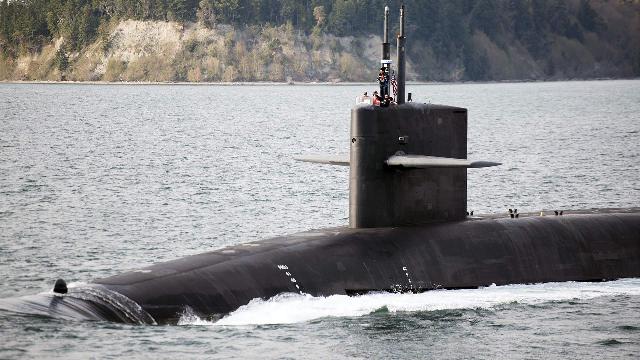The updated Trident-2 complex will be in service with the US Navy until 2084.
The Pentagon has signed a contract to create an upgraded Trident-2 submarine-launched ballistic missile. This was announced by Lockheed Martin Corporation. Thus, the United States is launching a program to upgrade the marine component of its nuclear triad. What is the current state of the naval nuclear forces of the main members of the nuclear club and how the arsenals will change in the future — in the Izvestia material.
The new US missile system
Lockheed Martin Corporation has signed a $383 million contract with the US Navy to develop an upgraded version of the Trident-2 rocket under the designation Trident II D5 Life Extension 2 (D5LE2). They will be used by promising Columbia-type nuclear-powered missile submarines, as well as promising British Dreadnought-type submarines.

Photo: IZVESTIA/Anna Selina
Image source: iz.ru
The completion of construction and adoption of the first such boats will happen no earlier than 2030-2031, but it is planned to start producing missiles earlier, as it is necessary to test both the missiles separately and the entire complex together with the underwater carrier. It is expected that the new missile system will be in service in the United States until 2084.
In the meantime, at least until the early 2030s, Ohio-class submarines with Trident-2 missiles remain the basis of the naval part of the US nuclear triad. The British naval nuclear forces are armed with the same missiles. The complex was adopted in the USA in 1990, and in the UK in 1995. Currently, the two fleets are armed with 14 American submarines and four British Vanguard types. In the UK, this is the only component of the nuclear forces — there are no ground or air components.
Characteristics of Trident-2
For its time, the Trident-2 was probably one of the best intercontinental solid-fuel missiles. The three—stage missile can launch two types of thermonuclear warheads — light and medium - at a range of up to 11,300 km.
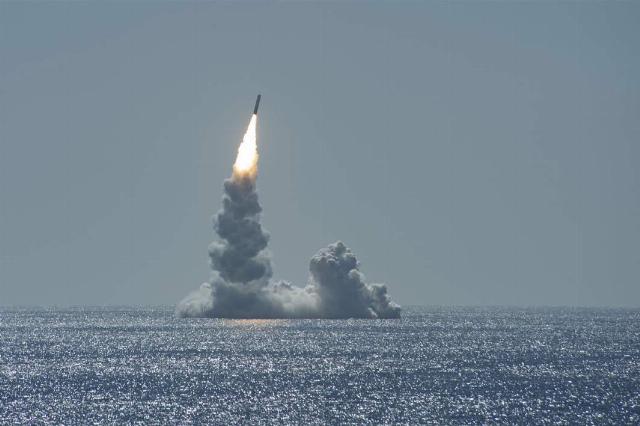
Launch of an unarmed Trident II missile
Image source: Photo: Global Look Press/US Navy
It has a very high accuracy — the deviation can be 90 m from the aiming point. At such a range, this is a very good indicator — only missiles with guided hypersonic warheads have better characteristics, but so far no one has such a sea-based version.
It can be noted that everyone looked back at the design perfection of the Tridents in the 1980s, and, in fact, the rocket laid a new level in solid-fuel marine rocket engineering.
The Russian equivalent of Trident-2
And the creators of the Bulava Russian ballistic missile for submarines managed to repeat and surpass this level.
The Moscow Institute of Thermal Engineering (MIT), using its developments on the Topol and Topol-M land-based intercontinental ballistic missiles (the future Yars), has created a new generation marine missile that is maximally unified with them. It turned out to be compact, practical, using fuel and structural components from other already mass-produced missiles and with a modern control system and combat equipment.
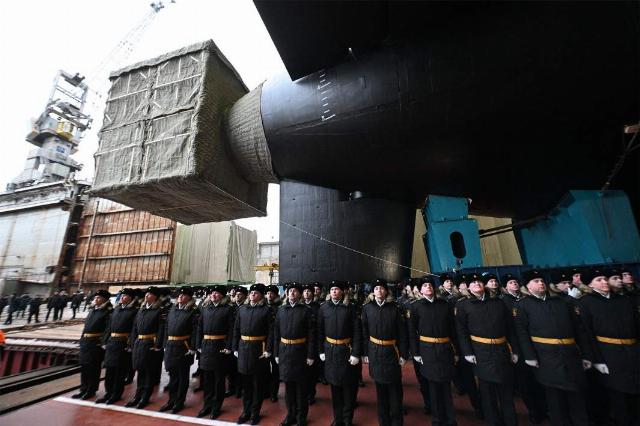
Launching of the nuclear-powered submarine Prince Pozharsky equipped with Bulava sea-based ballistic missiles in Severodvinsk
Image source: Photo: RIA Novosti/Kirill Zykov
The Bulava missile system is based on newly developed Borey-type nuclear submarines, which are being built in a large series of at least 14 units (including projects 955 and 955M). Each such nuclear—powered vessel carries 16 missiles, and each of them has from three to six warheads. The range is up to 9300 km according to official data. This is enough to destroy any targets in the territories of potential opponents.
The peculiarity of our Bulava is that it can be upgraded in the footsteps of its land—based older brothers - that is, if any serious improvements are adopted by the ground-based strategic Missile Forces, then MIT can almost certainly make the same improvements with the Bulava.
The closest candidates for the upgrade are guided hypersonic warheads and BIR-type combat equipment (individual breeding units). This is an implementation of warheads, when each has its own engine and its own control system. They can be separated along their trajectories almost immediately after the rocket engines shut down. And they will be able to hit targets very far apart from each other. All these "innovations" significantly increase the invulnerability of warheads from any missile defense systems.
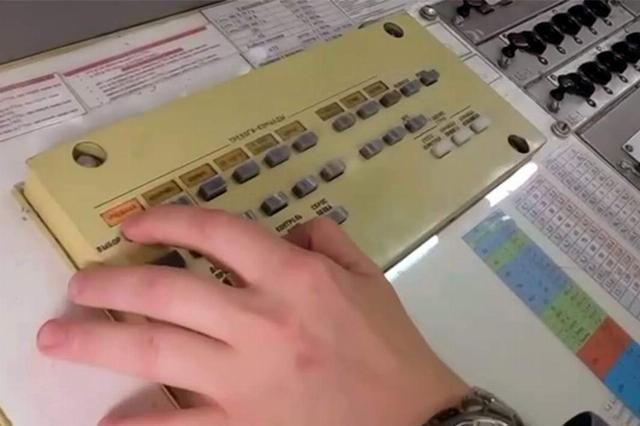
Training alert on the nuclear-powered strategic missile submarine Tula, launching the Sineva ballistic missile
Image source: Photo: RIA Novosti/Ministry of Defense of the Russian Federation
In addition, the Russian Navy still has liquid—fueled strategic missiles developed by the Makeev State Missile Center from Miass - Sineva and Liner missiles on Project 667BDRM submarines. These rockets are still the most advanced in terms of mass — the most effective ratio of rocket mass to payload mass. But in the coming years they will be replaced by unified "Maces". This will greatly reduce operating costs, and only one type of strategic missile will remain to supply our fleet.
What are the nuclear forces of China and France?
China's nuclear forces include ballistic missiles mounted on nuclear-powered missile submarines. It is based on six Type 094 nuclear submarines, each of which carries 12 JL-2 or JL-3 type ballistic missiles.
The Chinese missile program is extremely closed, and therefore there is little information about their complexes. But it is known that both missiles are solid-fuel, and if the JL-2 has a range of less than 8000 km, then the JL-3, which enters service in the 2020s, is already comparable to modern missiles from the United States and Russia with a range of at least 10,000 km. Both carry multiple warheads. The outdated JL-2 missiles are currently being replaced with the more advanced JL-3. And then, probably, the Chinese navy will have a project for a new nuclear-powered missile carrier.
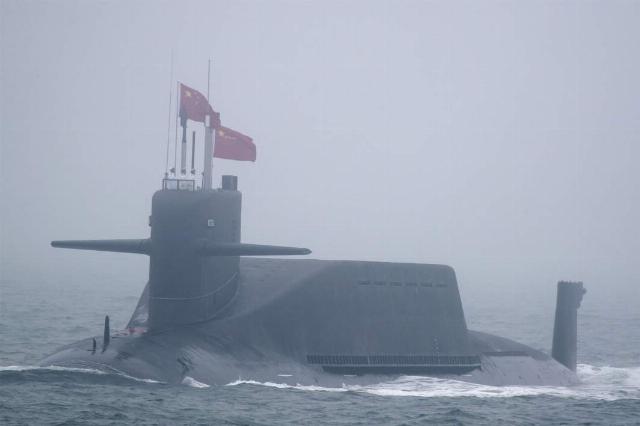
Nuclear submarine type 094A Jin Changzheng 10
Image source: Photo: AP Photo/Mark Schiefelbein
Four nuclear-powered Triumfan missile submarines make up the naval nuclear component of the French nuclear deterrent force. The boats joined the fleet from 1997 to 2010, and each carries 16 M51 solid-fuel missiles.
The missiles of its own French design have from six to ten low-power warheads (about 100 kt). In terms of their parameters, they are close to both Trident and Bulava. Probably, this missile system will not be replaced by anything in the next 20 years. But what will happen next is not entirely clear yet.
This is the picture of the leading nuclear powers today with their nuclear submarine fleets. But young nuclear—armed countries are coming on their heels - India is building and deploying its own nuclear submarines and may well develop long-range missiles for them. North Korea has already created missiles that can be deployed on submarines and may well begin work on a nuclear-powered missile carrier. Perhaps such work is already underway. They will be the two closest candidates to join the club of naval nuclear powers of the planet.
Dmitry Kornev
